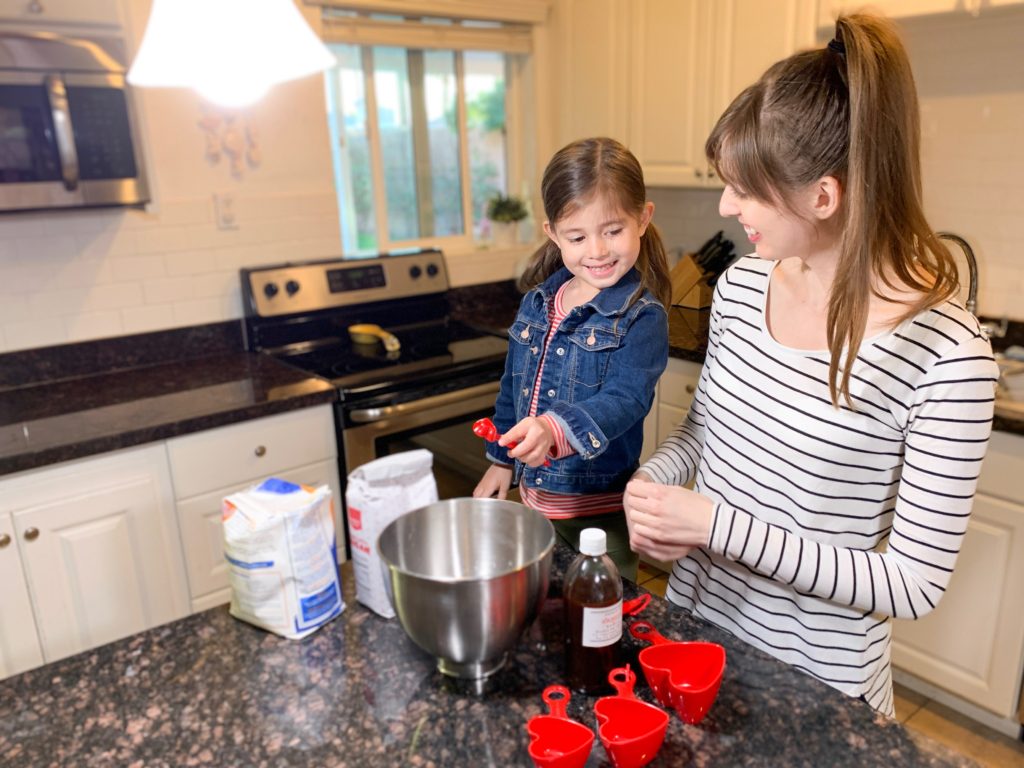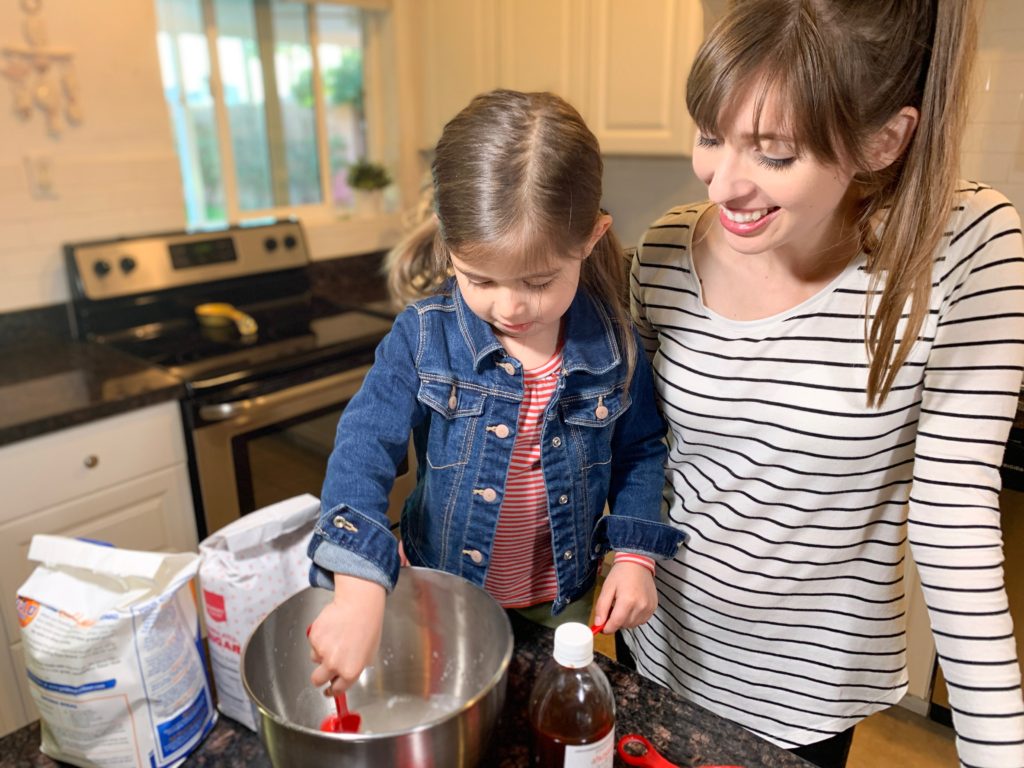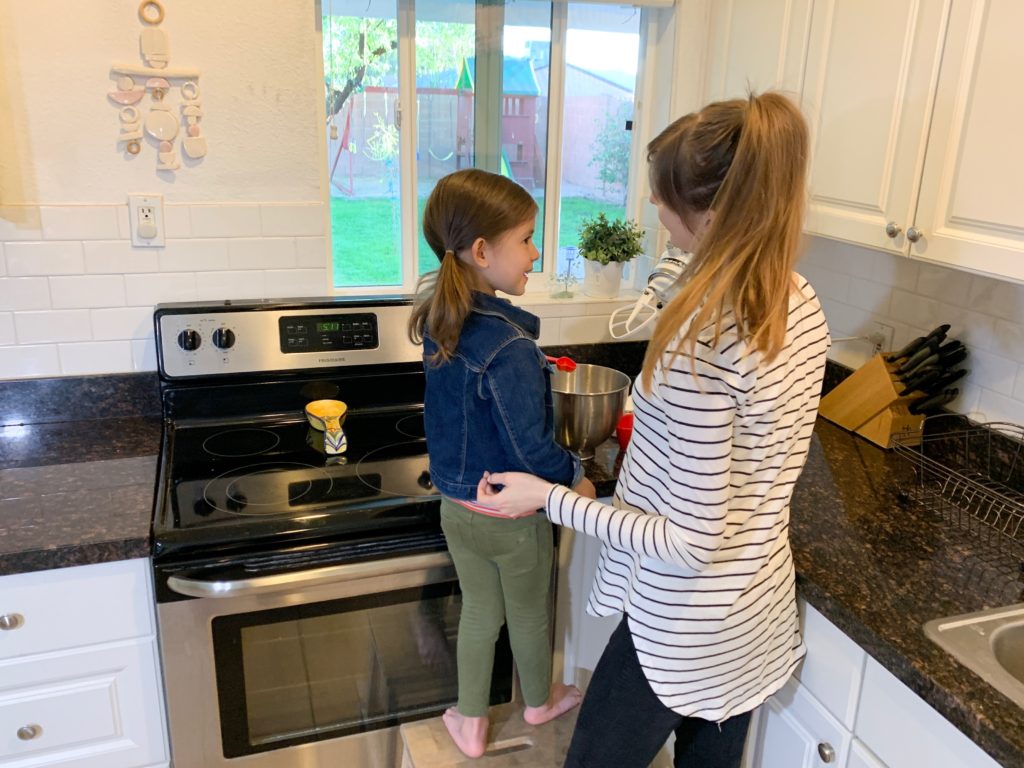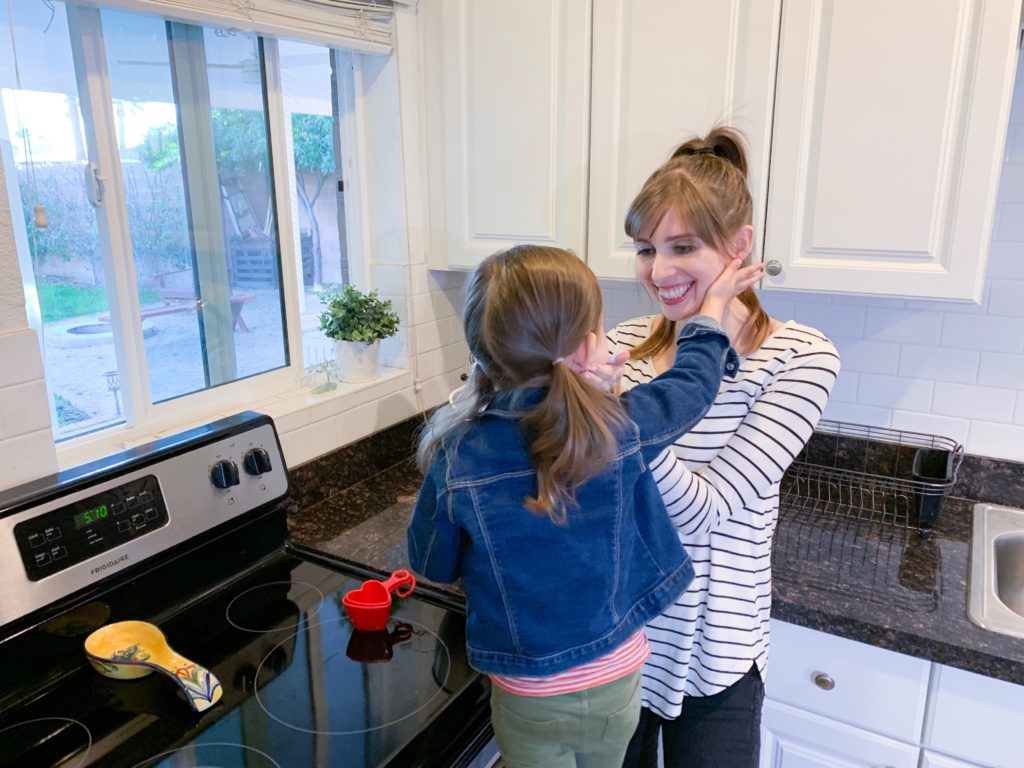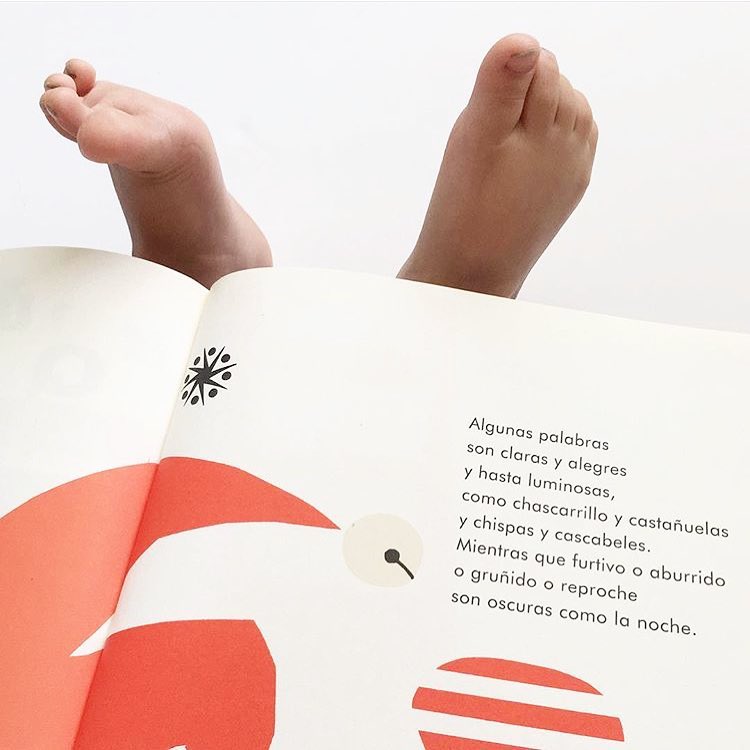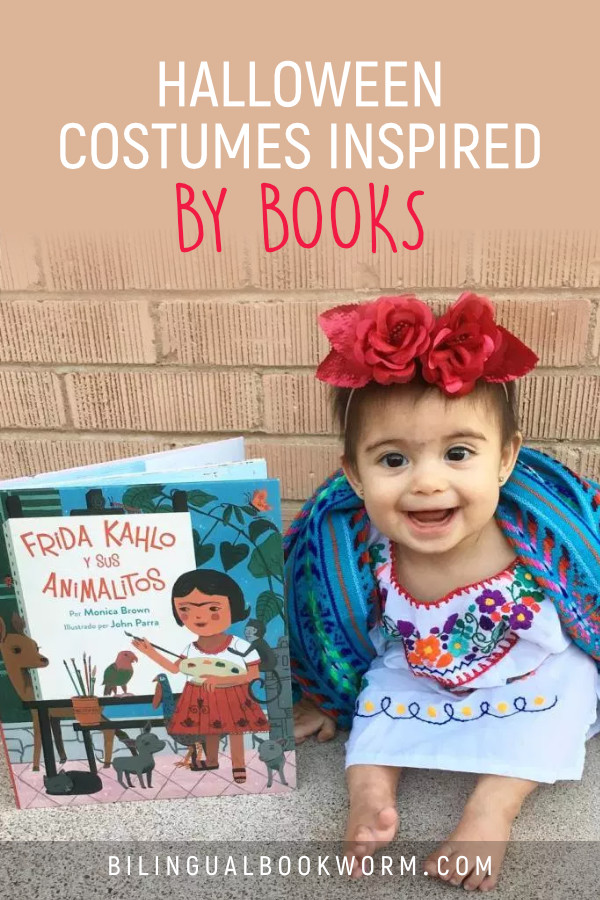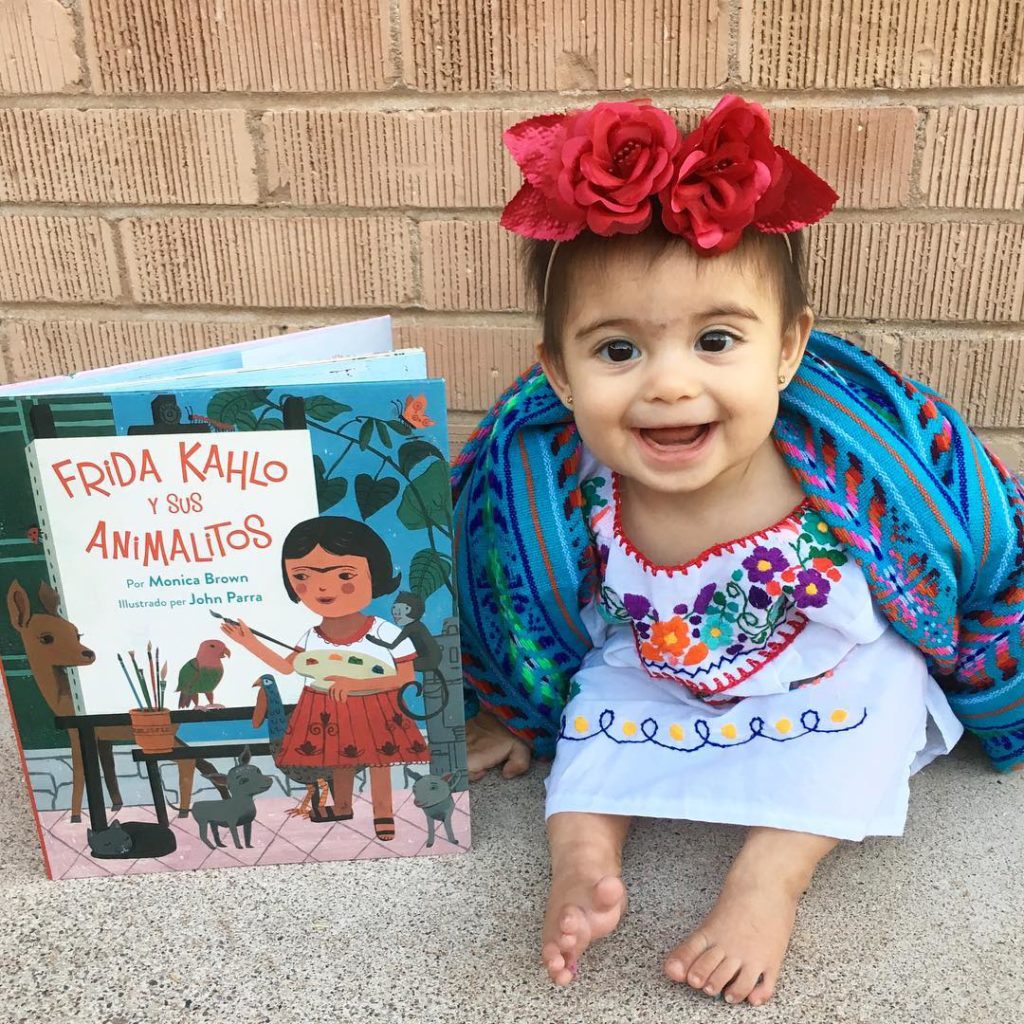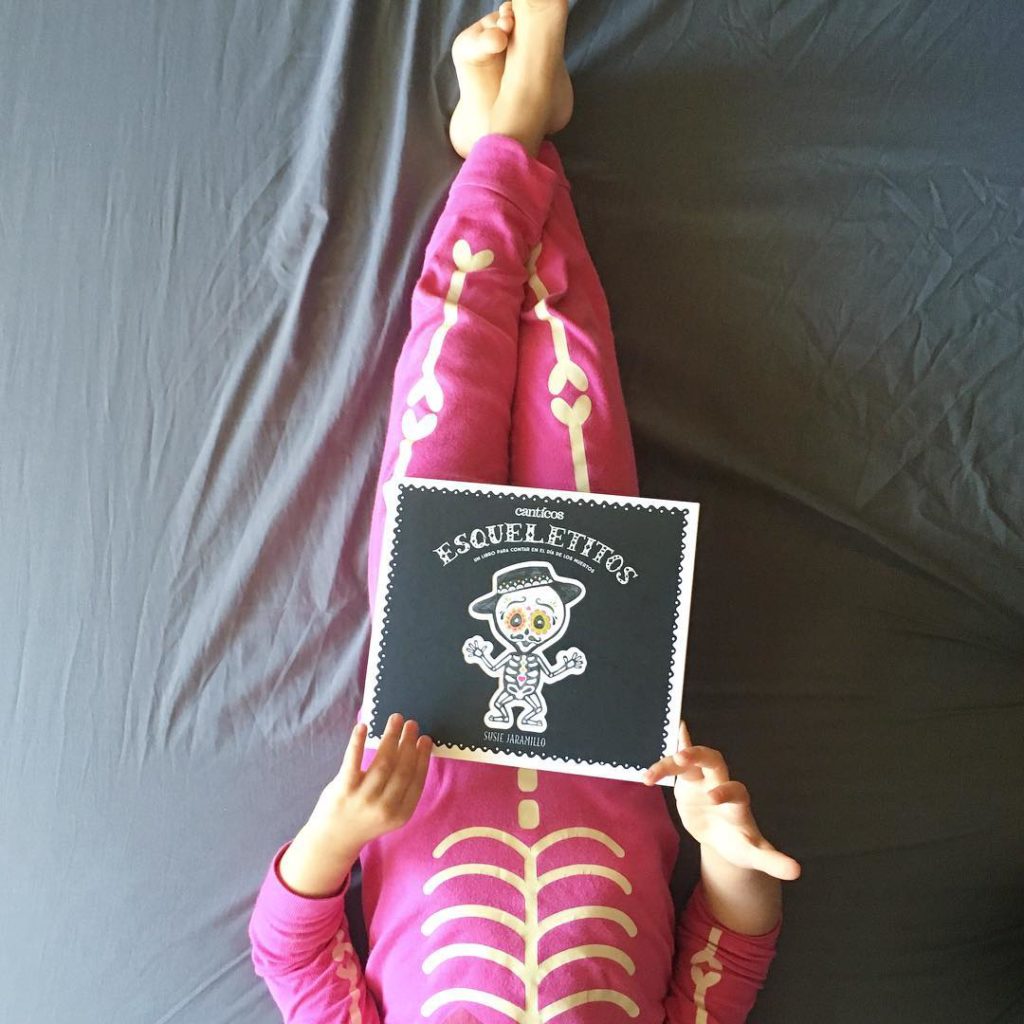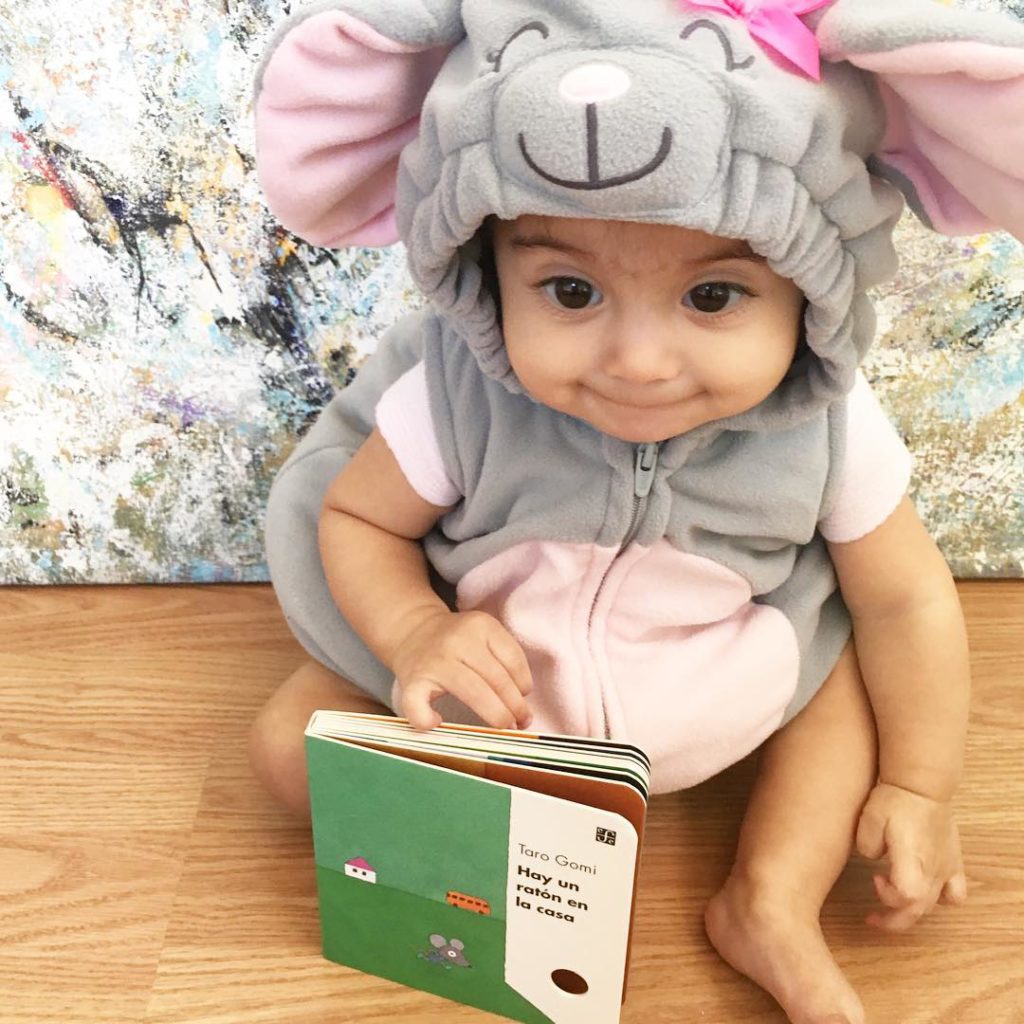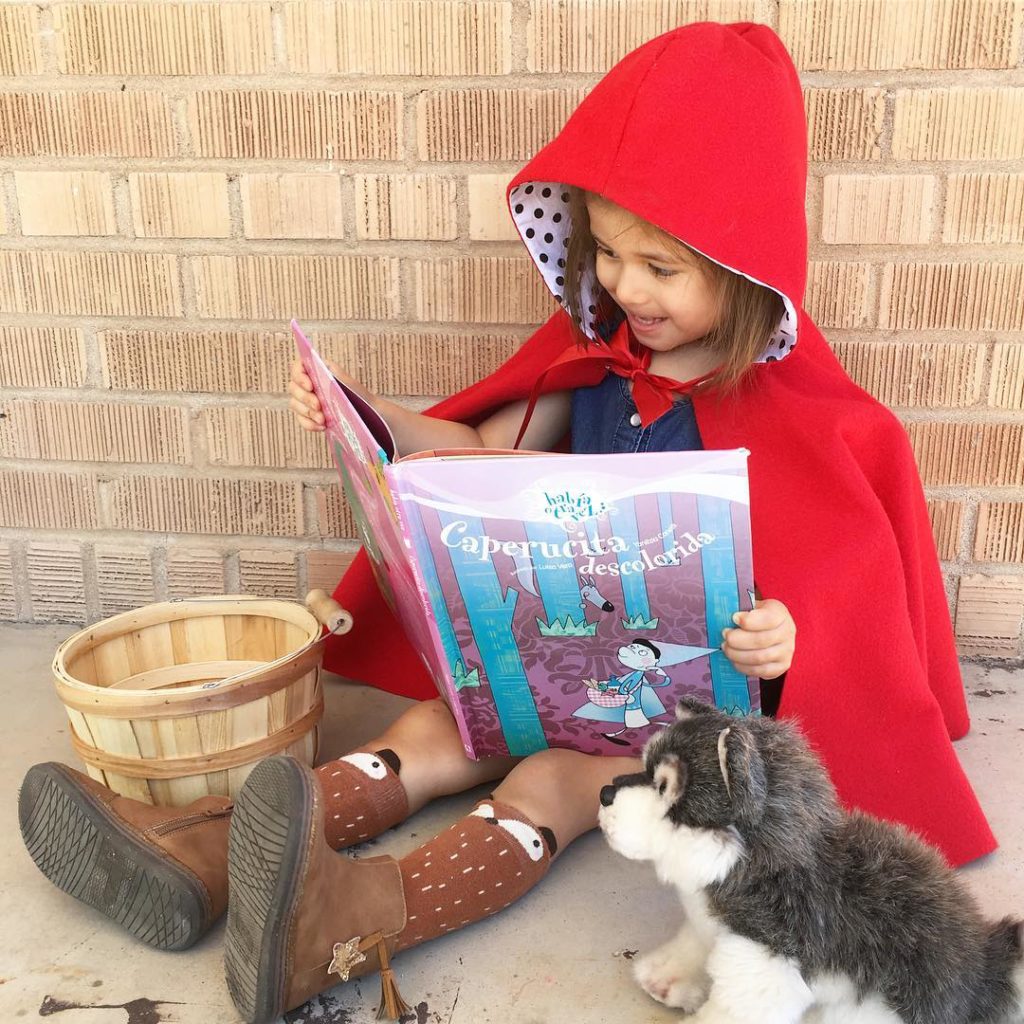Navidad, Navidad, ¡ya es Navidad! Hello, most wonderful time of the year! I always love a good Spanish children’s book roundup, but a roundup of Spanish CHRISTMAS books? I mean, it might as well be covered in twinkle lights!
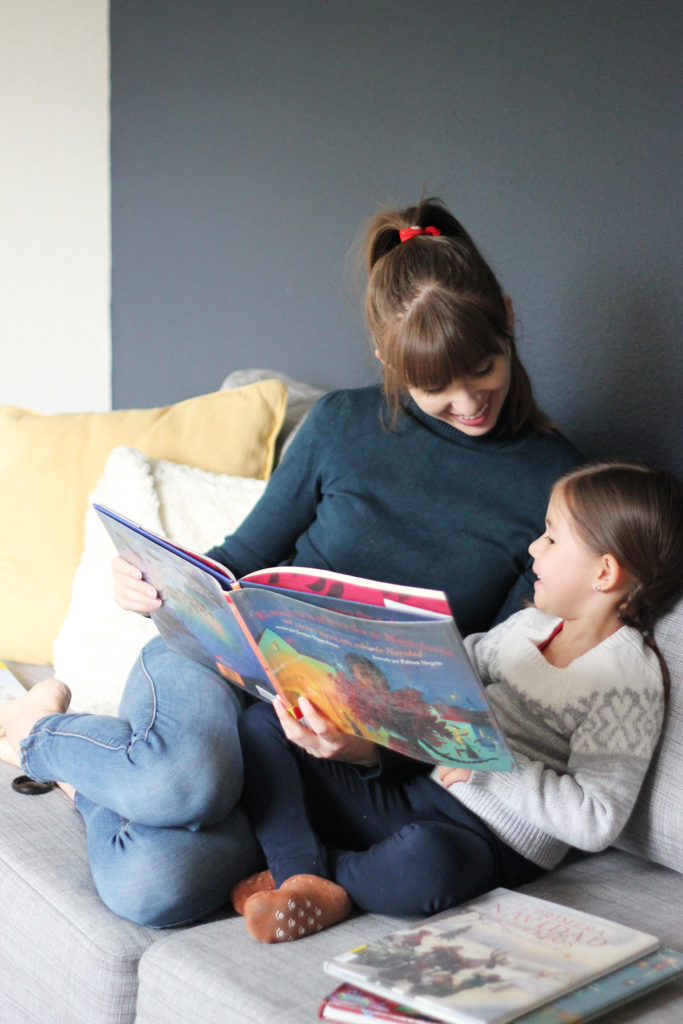
As I’ve been working with Read On Arizona to share the Smart Talk / Conversar para Aprender initiative, I’ve really been trying to think of how to use these strategies in my own family over the holidays. They’re all simple (but significant!), so they’re easy to incorporate into our daily routine even during this busy time of year:
- Describe
- Ask
- Respond
- Read
- Repeat
(You can see more detailed descriptions of the 5 strategies here!)
As for me and my family, for the next few weeks we’ll be focusing heavily on strategy #4: read! Reading with your baby or toddler is such a simple way to introduce new and unusual words and build vocabulary. And books and stories are also an ideal way to introduce concepts like Christmas, Santa, or snow (for us desert dwellers) to these little humans who are still learning!
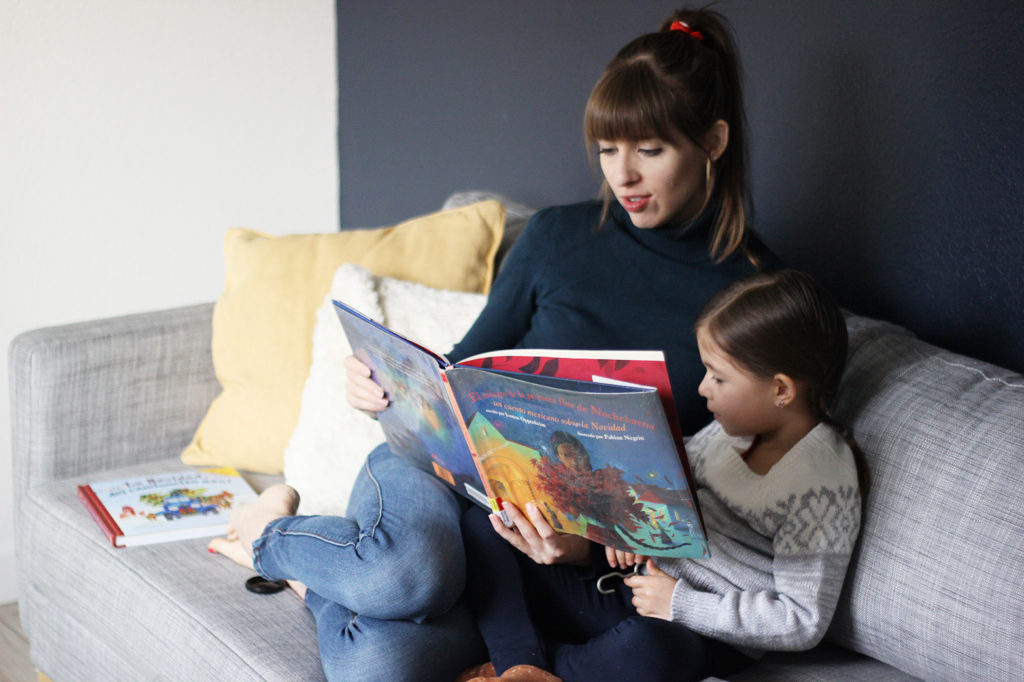
I know lots of families who do an advent calendar with books, where the kids open one wrapped Christmas book each day of December. I think that’s so lovely! Personally, I have not reached that level of #momgoals yet, but I DO have my stack of Spanish Christmas books ready to read with my two chiquitas this month.
Here are a few of our favorites, in case you’d like to look for them online or at the library!
SPANISH CHRISTMAS BOOKS
La Navidad del camioncito azul by Alice Schertle and Jill McElmurry
by Alice Schertle and Jill McElmurry
I’m going to tell you right now that the best part of this book is that the last page actually lights up with real-life lights. Such a crowd pleaser! This cute Christmas board book also doubles as counting practice for the littlest niños, as el camioncito azul delivers Christmas trees (and cheer!) to his animal friends.
La historia de la Navidad text by various authors, art by Robert Sabuda
text by various authors, art by Robert Sabuda
Small disclaimer here that this one is on the expensive side, but if you love books that are beautiful then it’s definitely worth checking out! This book tells the story of the birth of Jesus, and what makes it really special are the gorgeous, intricate pop-up scenes. It’s the perfect book to tell this Bible story, and so lovely that you’ll be excited to pull it out each Christmas. (This one is probably best reserved for older kids who won’t be tempted to rip out the pop-ups.)
La mejor Navidad by Chih-Yuan Chen
by Chih-Yuan Chen
It’s a going to be a small Christmas at the Oso house this year, since Papá Oso has lost his job and money is tight. But to everyone’s surprise, on Christmas morning there is a present under the tree for each member of the family— and not just any present, but a cherished item they thought they had lost! Who could have left them there? Observant readers will love helping the Oso family solve the mystery. 🙂 I love this story for its message that gifts don’t have to be expensive (in fact, they don’t have to cost anything at all). The most important thing is to give thoughtfully and from the heart!
La primera Navidad de los elfos by Atsuko Morozumi
by Atsuko Morozumi
After finding their woodland village suddenly invaded by woodcutters, the elves wander in search of a new home. Just when they’re starting to give up hope of ever finding a good place in the winter cold and snow, they spot the inviting lights of a small farm. If you’ve guessed that the farm belongs to Santa Claus and Mrs. Claus, you’re right! This is the charming story of the elves’ first Christmas with Santa and how they were able to lend a helping hand.
Ya llegan los Reyes Magos by Georgina Lázaro León
I love this book for so many reasons! This rhyming story is set in Puerto Rico, and takes us through one small boy’s day of preparing for el Día de los Reyes. First he has to write to the Reyes, there’s a whole day of cooking, and then everyone in the family goes to find “la hierba más fresca y más verde” to leave for the camels. And at the end of the night? “Unos partirán temprano / después de comer bizcocho / pero otros esperarán / a que esté listo el sancocho.” Highly recommended and a great option for talking about Día de los Reyes traditions!
El milagro de la primera flor de Nochebuena by Joanne Oppenheim
by Joanne Oppenheim
Ok, I don’t know why this book is priced at $105, but I found a copy for the extravagant price of FREE at my local library. I’m including it here in case you happen to spot it anywhere for less than a Benjamin! And also because this is a great version of the traditional Mexican tale about how the poinsettia plant, which folks all over the world use to decorate at Christmas, first came to be. Bonus points for the artwork which I think is really lovely.
The Christmas Gift / El regalo de Navidad by Francisco Jiménez
by Francisco Jiménez
I hadn’t heard of this one until I asked for your favorite Spanish Christmas books over on Instagram, and what a find it turned out to be! Author Francisco Jimenez based this this story on his own experience as the child of migrant farmworkers. Our protagonist, Panchito, learns that even though he will not be getting the present he would like for Christmas, the best gift of all is his family’s ability to be thankful for the blessings they have. Although they have so little in material possessions, what they do have is love for each other and willingness to sacrifice for a better life. This one is bilingual (English text on one side, Spanish on the other) and you proooobably want to have a box of tissues handy if you read it.
El expreso polar by Chris Van Allsburg
by Chris Van Allsburg
The Spanish translation of this classic Christmas tale follows a young boy as he boards a magical train on Christmas Eve. Bitterly skeptical of the existence of Santa Claus, his journey to the North Pole and eventual meeting of Santa (with many adventures along the way), helps him become a believer. This one is a sweet story, and pairs very nicely with the Polar Express movie if you’re planning to watch it this season!
BONUS ENGLISH BUT LATINX-INSPIRED BOOKS
‘Twas Nochebuena by Roseanne Greenfield Thong (English with sprinkles of Spanish)
by Roseanne Greenfield Thong (English with sprinkles of Spanish)
This rhyming book takes us through a traditional Mexican Nochebuena celebration! We follow a family through tasty tamale-making, to the posadas that start when it’s dark, and then to a piñata where “a shower of candy soon falls to el suelo / we chase after gum and sweet caramelo.” And after the midnight feast has been served and all of the gifts have been unwrapped, it’s time to wish everyone “Feliz Navidad and to all a good night!”
A Piñata in a Pine Tree: A Latino Twelve Days of Christmas by Pat Mora (English with sprinkles of Spanish)
by Pat Mora (English with sprinkles of Spanish)
Who can help but sing along to The 12 Days of Christmas? Though this book is mostly in English, there are things to find and count in Spanish on every page, from burritos bailando to lunitas cantando! This is a lovely Latinx twist on the traditional folk song, and my favorite part is the sweet surprise ending as the narrator’s secret amiga, who has been sending her gifts all along, is revealed. The artwork is really great in this one and (fun fact!) was done by Magaly Morales, the sister of one of my favorite author/illustrators, Yuyi Morales!
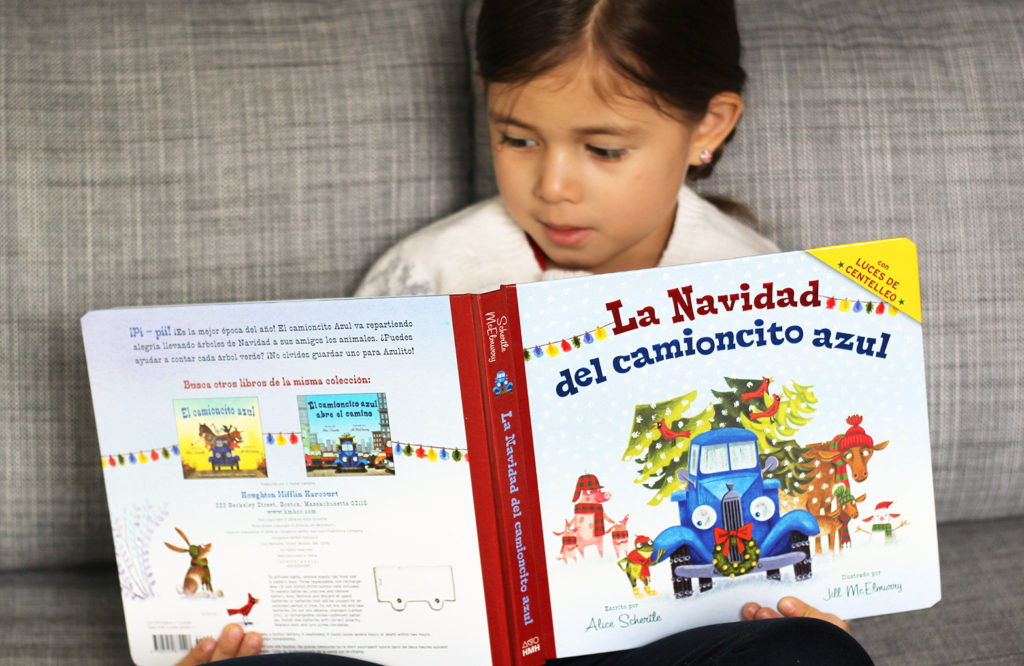
Thanks so much to those of you who sent me your favorite Spanish Christmas books via social media! And if I’m missing any great ones, please comment and let me know so I can add them to the list!
This post is sponsored by Read On Arizona, an organization that shares my enthusiasm for helping parents raise readers.
READ MORE
